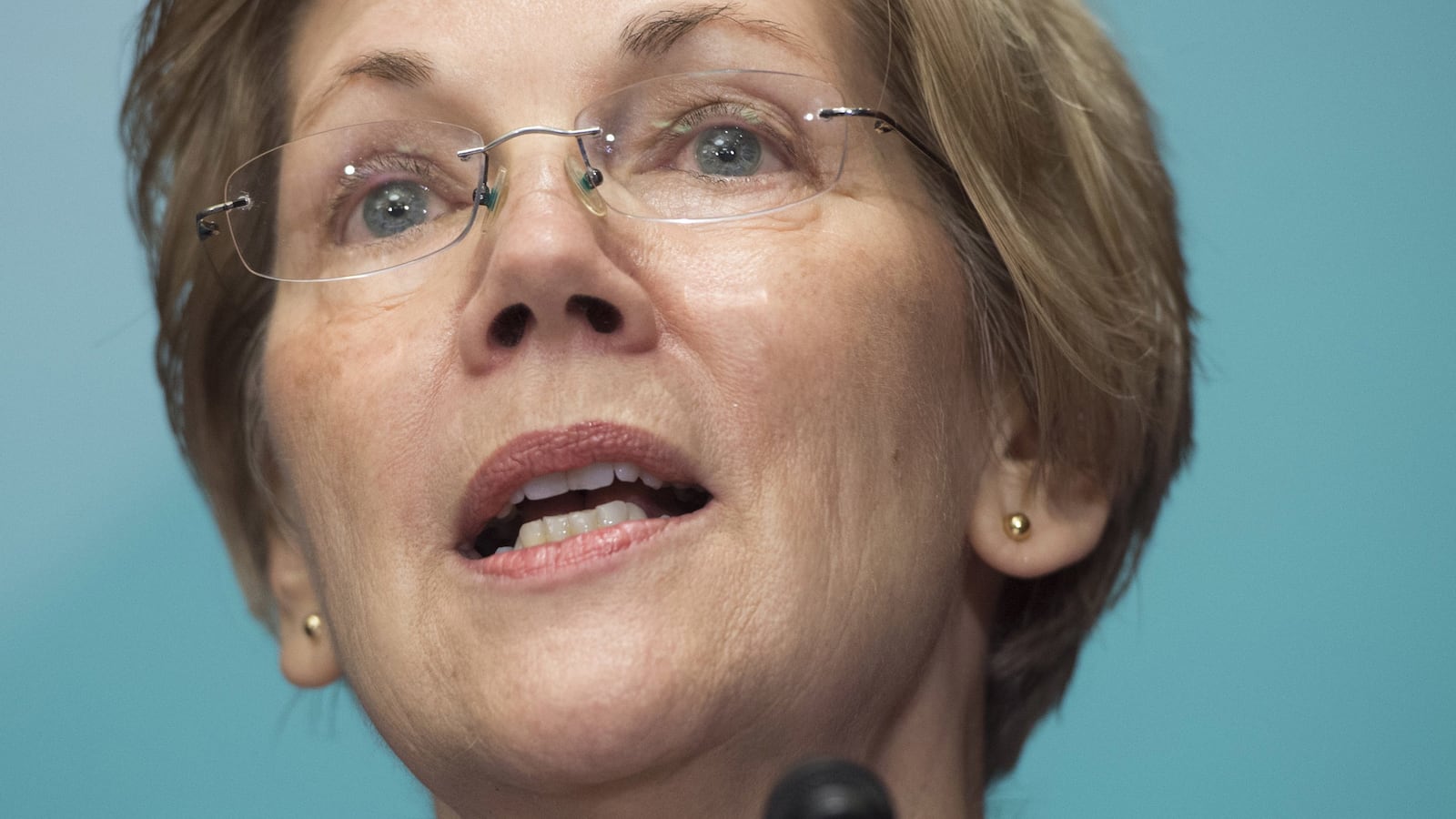We all get what Donald Trump is doing when he calls Elizabeth Warren Pocahontas. He’s holding her up as someone using her alleged Native American ancestry to game the system and gain entrance to elite universities, allegations that understandably rile up his conservative base.
There is no evidence that Warren ever cited her Cherokee heritage to get ahead, or that the universities she attended and where she taught even knew of her heritage, but that doesn’t stop Trump. He gets laughs at his rallies when he pokes fun at Warren, and that’s what matters.
He has no idea how many more people he’s insulting when he invokes Pocahontas 400 years after her death, or how the mythical tale of this young Powhatan tribal woman fits into America’s complicated story of race.
Having a laugh at other people’s expense is proving costly for Trump as polls show him with virtually no support from African-Americans in the key swing states of Ohio and Pennsylvania. Slurring Pocahontas is no way to win friends in any minority community.
“If you went to an Urban League or an NAACP Convention and asked who in the audience had Native American ancestry, 80 percent would stand up, and it would only be true genetically for a very small group,” says Mary Helen Thompson, a longtime Democratic activist, now retired, who has researched her family’s freed and enslaved roots back to the colonial period.
She was outraged when former Massachusetts Sen. Scott Brown, campaigning with Trump last month, said Warren should take a DNA test. “They’re trying to ridicule her for what was a family story,” says Thompson. “I think she truly believes she is part Native American. A huge number of black people believe they are connected to Native Americans whether they are or not. We shouldn’t be talking about a spit test.”
A lot of whites too, like Warren, are proud to cite family lore about a Native American ancestor, however distant, and irrespective of whether they could prove it in a court of law. In the early part of the last century, so many influential families in Virginia claimed descent from Pocahontas that a “Pocahontas Exception” was included in the state’s 1924 Racial Integrity Act stating that a person could be considered white even if he or she had as much as one-sixteenth Native American ancestry.
This was the era of “the one-drop rule,” where a single drop of black blood, or one sub-Saharan or African ancestor, made a person black from a social and legal perspective. That ended, at least legally, with the Loving v. Virginia case in 1967, when the Supreme Court ruled unanimously that the marriage between Mildred Loving, a black woman, and Richard Loving, a white man, was constitutional, nullifying Virginia’s Racial Integrity Act and ending all race-based legal restrictions on marriage in the United States.
“The claims by African Americans they have Indian blood are controversial—not because they aren’t true—but because it’s perceived as not wanting to be 100 percent black,” says Paul Butler, a Georgetown University Law Center professor who specializes in criminal and race relations law. “There are jokes about the most Afro-centric looking person claiming Native American ancestry.”
When white people boast about Indian ancestry, it’s in a very different context, says Butler. “Their concern isn’t about being ashamed of being white,” he says. Rather, they want to embrace their lineage but they don’t want to dilute their whiteness; hence, the Pocahontas Exception.
“The whole concept of race is a made up social category,” says Butler. “It’s not a genetic or biological concept. It’s a social category that’s created to do a certain kind of work. What’s the work that race does? One theory is to preserve white blood purity,” he says, putting “blood purity” in quotes when he talks because it means nothing scientific. There is no difference between black blood and white blood.
“Indian blood dilutes just as much as black blood,” says Butler, which leads to a second theory: that racial distinctions, far from being about white blood purity, are drawn to protect the economic privileges that white people have. The Pocahontas Exception in his view is “evidence that race is more about giving a privilege to people identifying as white.”
During the 19th century, the Virginia legislature defined a person with one-eighth or less African ancestry as white, a more generous interpretation than the one-drop rule that followed. During the 1700s and 1800s when slavery was practiced, white Virginians were less concerned about non-European ancestry for obvious reasons: the intermingling of the races was widespread.
Thompson’s research led her to a farm in Rappahannock County, Virginia, called The Shade, which had been established from a land grant given to loyalists by King Charles II. From original court records, she learned that James Green built a house in 1780 on 1,000 acres, and that his son, Col. Charles Green, born around 1800, owned her great great grandmother Matilda, and Matilda’s children. One of those children, fathered by Col. Green, was Thompson’s great-great-grandmother on her father’s side.
Her mother’s family in North Carolina—mostly free people of color, but some enslaved, who “considered themselves to have Native American ancestry,” says Thompson. “But it doesn’t show up in me.” Her DNA tested at 53.6 percent Northern European, 45.1 sub-Saharan African, and only 0.7 percent Native American, with .6 “unassigned.”
The low percentage of Native American DNA “doesn’t matter to me, but it matters to a lot of people,” she says. When historian Henry Louis Gates, Jr. found that his genetic makeup was only 0.8 percent Native American ancestry, it created a family crisis. “I thought my computer was going to explode,” he wrote at the time. “I didn’t realize I had so many cousins who were so deeply committed to being ‘part Indian.’ And the venom those emails contained!”
“Beyond DNA, this is something so many black people believe in,” says Thompson. The young couple living on the few acres that remain of “the farm” are not familiar with its slave-holding history, and Thompson is philosophical about the racial mosaic that made her who she is, musing in an email that “Race and identity are a lot like tie-dyed fabric: the pattern depends how you knot and tie the cloth and how long you steep it in the dye. As to the outcome—different every time.”





